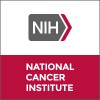
Culturally Appropriate Nutrition Communication for Mexican American Women
Lifestyle Risk ReductionNutrition Poor4 moreA randomized controlled trial to test the effects of culturally appropriate nutrition communication for Mexican American women.

Phase II Study Evaluating the Efficacy and Safety of Ociperlimab in Combination With Tislelizumab...
Triple Negative Breast CancerThe primary scientific question of interest of this study is whether the combination of ociperlimab, tislelizumab and chemotherapy improves progression-free survival (PFS) compared to the combination of placebo, pembrolizumab and chemotherapy as first-line therapy for adult men and women with advanced triple negative breast cancer (TNBC) whose tumors express programmed death ligand 1 (PD - L1) [combined positive score (CPS) ≥10], regardless of study treatment discontinuation or start of new anti-neoplastic therapy.

Olaparib and Alpelisib for Treatment of Metastatic Breast Cancer, A ComboMATCH Treatment Trial
Anatomic Stage III Breast Cancer AJCC v8Anatomic Stage IV Breast Cancer AJCC v82 moreThis phase II ComboMATCH treatment trial studies the effect of adding a drug called BYL719 (alpelisib) to the usual treatment of olaparib in patients with breast cancer that has spread from where it first started (breast) to other places in the body (metastatic). Olaparib is an inhibitor of PARP, an enzyme that helps repair DNA when it becomes damaged. Blocking PARP may help keep tumor cells from repairing their damaged DNA, causing them to die. PARP inhibitors are a type of targeted therapy. Alpelisib blocks certain proteins, which may help keep tumor cells from growing and may kill them. It is a type of kinase inhibitor. Giving alpelisib in combination with olaparib may be able to improve treatment results for patients with metastatic breast cancer.

MR Correlated Spectroscopic Imaging for Diagnosing Breast Cancer
Benign Breast NeoplasmBreast Carcinoma1 moreThis trial studies how well an imaging technique called magnetic resonance (MR) spectroscopic imaging works in identifying breast cancer in women with benign or suspicious areas in the breast. Magnetic resonance imaging (MRI) is a diagnostic tool used to investigate the location of tumors in different organs. Since radiological pictures do not have sufficient information for tumor grades, invasive procedure such as biopsy is performed on patients with breast cancers for diagnosis. Breast tissue contains water, fat, and chemicals known as metabolites. MR spectroscopic imaging may help to characterize the various breast metabolite steady state levels and identify the differences between necrosis and tumor recurrence, which is difficult using radiological procedures such as MRI.

Behavioural Science Messages in Breast Cancer Screening
Breast CancerBreast cancer is the most common cancer in the United Kingdom, with 1 in 8 women affected during their lifetime. Whilst survival rates are high, the 5-year survival rate is 72% higher with the earliest stage breast cancer, compared to the latest disease stage. The National Health Service Breast Screening Programme invites women aged 50 to 70 years old every three years to a mammogram. By enabling earlier detection, it is estimated that the National Health Service Breast Screening Programme saves 1300 lives per year. Despite the potential benefits of breast cancer screening, attendance is falling. Behavioural Science is a field of study concerning understanding the processes underpinning human action. Behavioural theories, such as the Capability Opportunity Motivation-Behaviour model. Recent studies have shown the application of behavioural science to screening may also facilitate uptake of invitations. However, the use of plain text messages limits which behavioural determinants can be feasibly addressed, and what techniques can be used. Video messages can allow for more complex and a broader range of behavioural change techniques to be incorporated, and therefore have greater impact upon attendance. Whilst behavioural science-informed messages have previously been trialled by groups to facilitate breast screening attendance, their effectiveness has been variable. One of the reasons for this, is that text messages are of limited length and formatting capability, thus restricting the number of behavioural channge techniques that can be included. Moreover, some behavioural techniques are more complex than others, and plain text can limit the extent to which these can be feasibly incorporated. Video messaging provides a delivery mechanism that may enable more complex, and different combinations to be trialled. There is however, a paucity of data regarding the impact of sending a video-based behavioural science message upon attendance rates at breast cancer screening programmes. This study looks to investigate the impact of a video-message, compared to behavioural science-based text messages and standard reminder messages. The primary object is to determine the impact of behavioural science informed (1) video and (2) text messages compared to usual care, upon uptake of breast cancer screening. Secondary objectives involve how this impact on attendance differs between population subgroups including people from differing demographic groups.

Effect of Chan-Chuang Qigong With Breathing Meditation on Quality of Life in Patients With Breast...
Breast CancerQuality of Life1 moreThe aim of this study was to evaluate the effect of the 15 weeks Chan-Chuang qigong program with breathing meditation on quality of life and interoceptive awareness in patients with breast cancer during chemotherapy.

Supine MRI in Breast Cancer Patients Undergoing Upfront Surgery or Receiving Neoadjuvant Therapy...
Breast CancerThis research study involves the use of a common breast imaging modality (magnetic resonance imaging, 'MRI') and is investigating its role in evaluating surgical decision making for breast cancer when it is performed with the patient in a new position (lying on one's back) as opposed to in the standard position (lying on one's stomach).

Role of Indocyanine Green (ICG) for Detection of Sentinel Nodes in Breast Cancer
Breast CancerThis is a single-center prospective study evaluating the diagnostic performance and safety of Infracyanine in women with early breast cancer whose the research of sentinel node(s) combines isotopes and Infracyanine.

Magseed Magnetic Marker in Locating Axillary Lymph Nodes in Patients With Breast Cancer Undergoing...
Breast Carcinoma Metastatic in Lymph NodeStage II Breast Cancer AJCC v6 and v74 moreThis phase IV trial studies the side effects of the Magseed magnetic marker and how well it works in locating lymph nodes in the underarm area in patients with breast cancer undergoing surgery. Injecting a small metallic marker in or near the lymph node prior to surgery may help the surgeon locate the lymph nodes during surgery without using radiation.

Aerobic and Strength Training Exercise in Improving Fitness and Arm Health During and After Radiation...
Stage II Breast CancerStage IIA Breast Cancer5 moreThis randomized pilot phase I/II trial studies how well aerobic and strength training exercise works in improving fitness and arm health during and after radiation therapy consisting of regional nodal radiation in patients with stage II-III breast cancer. Aerobic and strength training exercise training during and after radiation therapy may reduce treatment related toxicities and improve adherence to exercise long term in patients with breast cancer.
